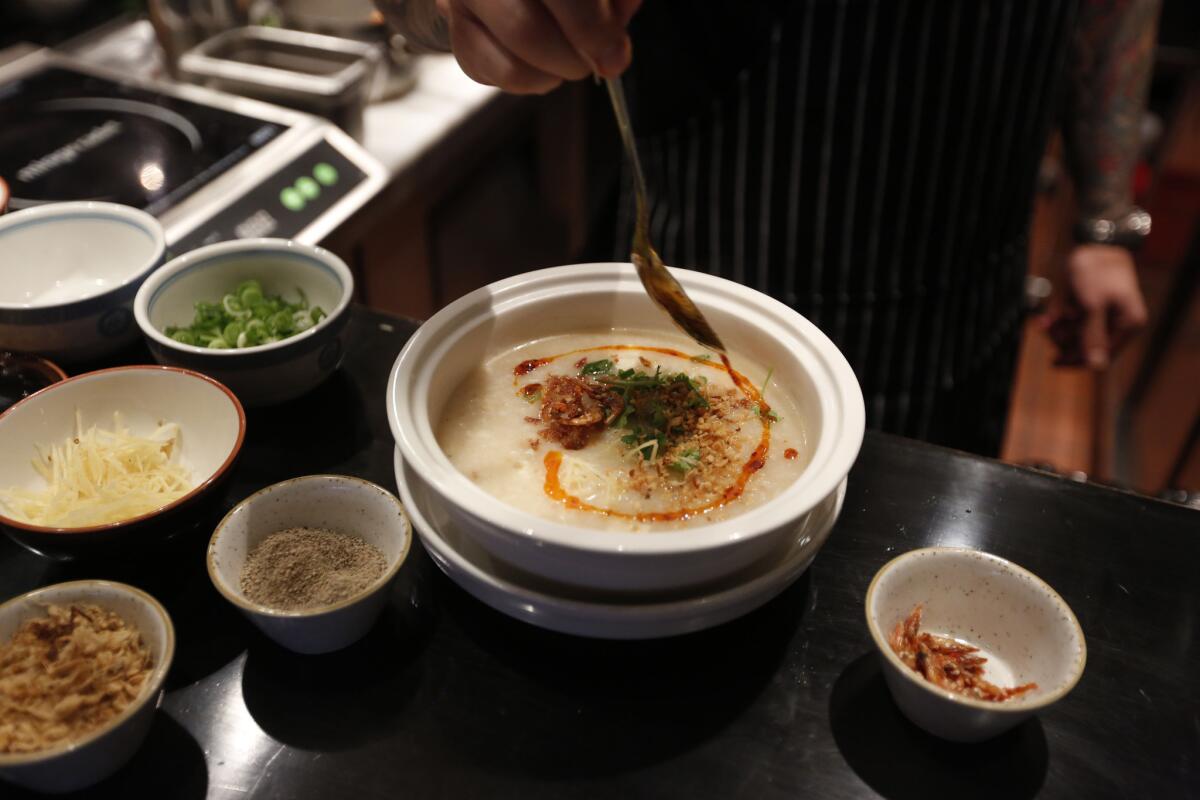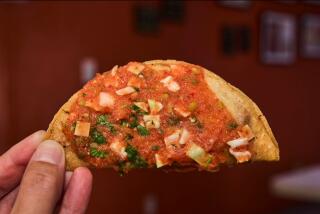The California minimum wage increase: What it would mean for restaurants and your dinner bill

If a new statewide minimum-wage proposal is adopted, California’s restaurants will be assessing its effect on wages, particularly with regard to tipping.
The ongoing debate over tipping, service charges and the minimum wage for restaurant employees has been a much talked about subject in the Los Angeles dining scene for quite some time now. But the issue came to a head Thursday when the state Legislature approved a plan to increase the minimum wage in California from $10 an hour to $10.50 next year and incrementally to $15 an hour by 2022.
According to a document obtained by The Times, businesses with fewer than 25 employees would have an extra year to comply with the $15 an hour rate.
What does this mean for restaurant owners and diners? Here’s a look at the facts.
How will this affect tipping?
Restaurants in California are not allowed to count an employee’s tip credit toward overall wages. So servers and other front-of-the-house employees who receive tips will continue to receive tips, as well as the increase in their hourly pay. This could further widen the pay gap between front-of-house employees and those back-of-house workers who generally do not receive tips.
Will dinner be more expensive?
In Los Angeles, the Bel-Air Bar + Grill announced it will increase menu prices, eliminate tipping and increase employee wages.
It “allows us to offer our entire staff a fair, living wage,” the restaurant said in a recent Times article.
And in Culver City, Bar Nine coffee shop and roaster has eliminated tipping and increased the price of most drinks by 50 cents.
Nationally, some restaurants are doing away with tipping and adopting an all-inclusive model to provide higher wages for employees. Among them is New York-based chef Danny Meyer (Shake Shack, Gramercy Tavern). He raised menu prices to compensate for the employee pay increase.
In a recent essay, Evan Kleiman, who ran Angeli Caffe in Los Angeles for 27 years and is the longtime host of KCRW’s “Good Food,” advocated for doing away with tipping in favor of all-inclusive pricing.
What about service charges?
Some Los Angeles restaurants, including Jon & Vinny’s, Trois Mec and Petit Trois, have implemented mandatory service charges. Employers own the revenue generated from this charge and are not required to share it with employees. Most restaurants with a service charge will make clear on the customer bill where the revenue from the service charge will go. Diners are free to leave tips on top of the service charge, or not.
This led to confusion at Andy Ricker’s Pok Pok in Chinatown, where customers ended up mistaking the charge for the total tip or not leaving as much as they normally would. Ricker eventually eliminated the 5% service charge.
How is this working elsewhere?
In New York City, the minimum wage will increase to $15 by 2018. Seattle has already increased its minimum wage from $9.50 to $11 an hour, and businesses with 500 or more employees will need to further increase the minimum wage to $15 an hour by next year. In San Francisco, the minimum wage has been increased from $11.05% to $12.25 and will reach $15 an hour by 2018.
In some of these cities, it’s too early to tell how the wage increase will affect jobs and restaurant prices. But in Seattle, there are reports of restaurants raising prices by more than 20%.
Ivar’s Salmon House in Seattle decided to start paying its employees $15 an hour ahead of the required time frame and has already raised its prices by 21%.
A report by the American Action Forum, a group that identifies itself as a “center-right” policy institute, suggests growth in the rate of restaurant employment in cities that raised their minimum wage last year is down when compared to other cities in the same state. The report found that the number of restaurant employees in Seattle has grown .6% while the growth rate in the rest of the state is 6%.
The Seattle Times spoke with restaurant owners who recently announced closures in Seattle, but they all claimed the closures are unrelated to the minimum wage increase.
Follow me on Twitter and Instagram @Jenn_Harris_
ALSO:
What Jonathan Gold is eating: Pierna de puerco at El Colmao
Inside the new Mast Brothers chocolate factory and shop in downtown L.A.
There’s a dog cafe in Silver Lake where you can play with dogs and drink coffee
More to Read
Eat your way across L.A.
Get our weekly Tasting Notes newsletter for reviews, news and more.
You may occasionally receive promotional content from the Los Angeles Times.










